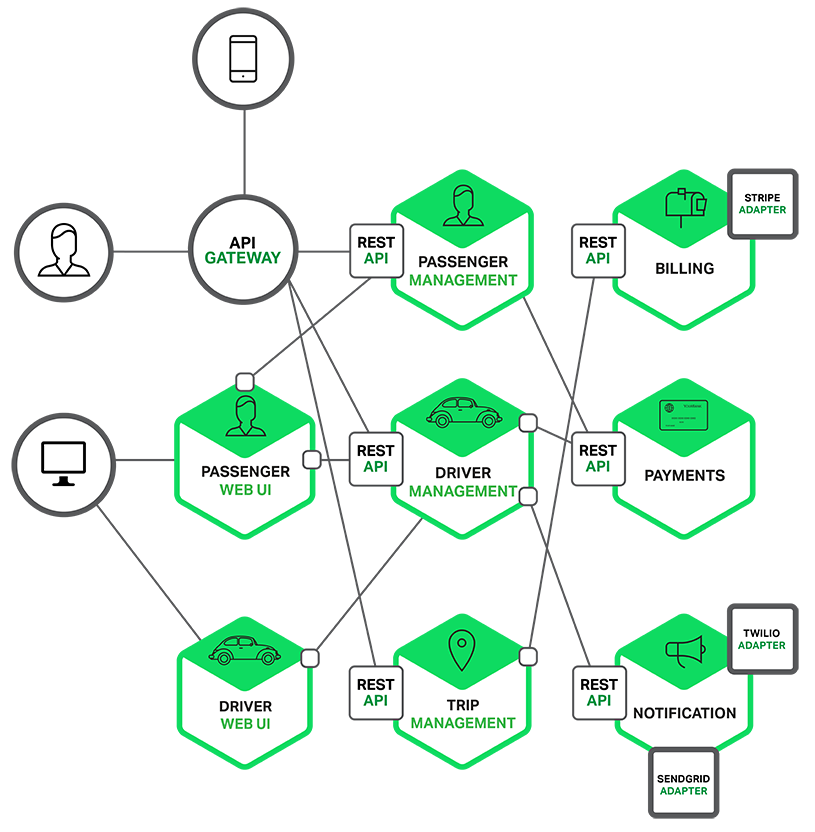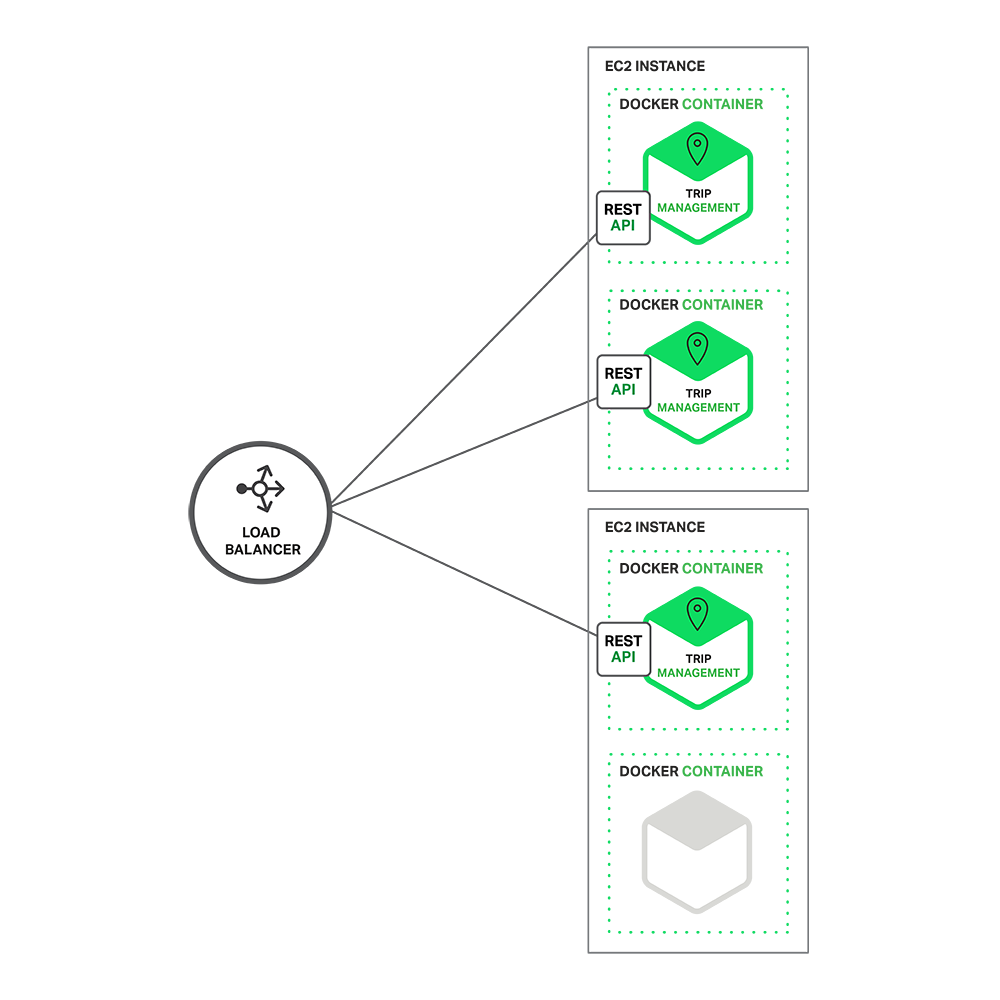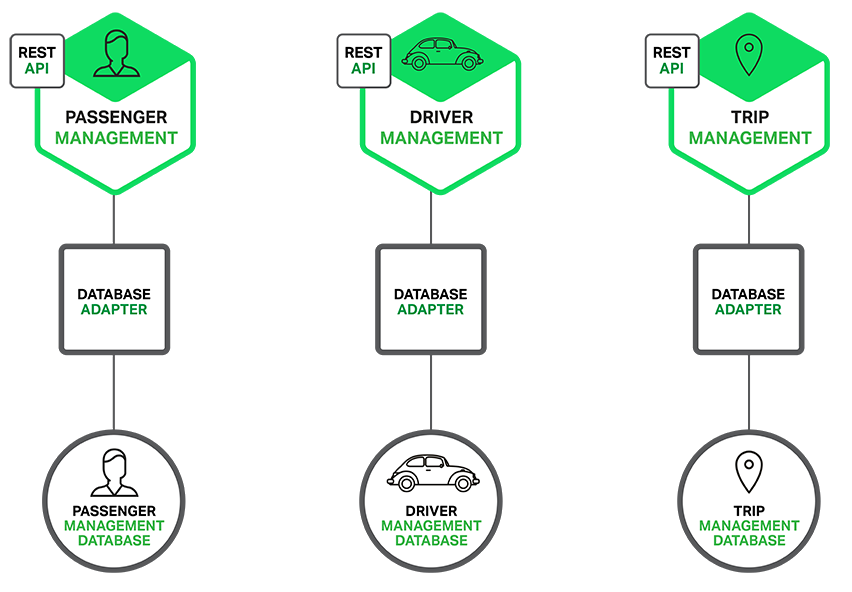Introduction to Microservices
Microservices are currently getting a lot of attention: articles, blogs, discussions on social media, and conference presentations. They are rapidly heading towards the peak of inflated expectations on the Gartner Hype cycle. At the same time, there are skeptics in the software community who dismiss microservices as nothing new. Naysayers claim that the idea is just a rebranding of SOA. However, despite both the hype and the skepticism, the Microservices Architecture pattern has significant benefits – especially when it comes to enabling the agile development and delivery of complex enterprise applications.
This blog post is the first in a seven‑part series about designing, building, and deploying microservices. You will learn about the approach and how it compares to the more traditional Monolithic Architecture pattern. This series will describe the various elements of a microservices architecture. You will learn about the benefits and drawbacks of the Microservices Architecture pattern, whether it makes sense for your project, and how to apply it.
Let’s first look at why you should consider using microservices.
Microservices – Tackling the Complexity
Many organizations, such as Amazon, eBay, and Netflix, have solved this problem by adopting what is now known as the Microservices Architecture pattern. Instead of building a single monstrous, monolithic application, the idea is to split your application into set of smaller, interconnected services.
A service typically implements a set of distinct features or functionality, such as order management, customer management, etc. Each microservice is a mini‑application that has its own hexagonal architecture consisting of business logic along with various adapters. Some microservices would expose an API that’s consumed by other microservices or by the application’s clients. Other microservices might implement a web UI. At runtime, each instance is often a cloud VM or a Docker container.
For example, a possible decomposition of the system described earlier is shown in the following diagram:

Each functional area of the application is now implemented by its own microservice. Moreover, the web application is split into a set of simpler web applications (such as one for passengers and one for drivers in our taxi‑hailing example). This makes it easier to deploy distinct experiences for specific users, devices, or specialized use cases.
Each backend service exposes a REST API and most services consume APIs provided by other services. For example, Driver Management uses the Notification server to tell an available driver about a potential trip. The UI services invoke the other services in order to render web pages. Services might also use asynchronous, message‑based communication. Inter‑service communication will be covered in more detail later in this series.
Some REST APIs are also exposed to the mobile apps used by the drivers and passengers. The apps don’t, however, have direct access to the backend services. Instead, communication is mediated by an intermediary known as an API Gateway. The API Gateway is responsible for tasks such as load balancing, caching, access control, API metering, and monitoring, and can be implemented effectively using NGINX. Later articles in the series will cover the API gateway.

The Microservices Architecture pattern corresponds to the Y‑axis scaling of the Scale Cube, which is a 3D model of scalability from the excellent book The Art of Scalability. The other two scaling axes are X‑axis scaling, which consists of running multiple identical copies of the application behind a load balancer, and Z‑axis scaling (or data partitioning), where an attribute of the request (for example, the primary key of a row or identity of a customer) is used to route the request to a particular server.
Applications typically use the three types of scaling together. Y‑axis scaling decomposes the application into microservices as shown above in the first figure in this section. At runtime, X‑axis scaling runs multiple instances of each service behind a load balancer for throughput and availability. Some applications might also use Z‑axis scaling to partition the services. The following diagram shows how the Trip Management service might be deployed with Docker running on Amazon EC2.

At runtime, the Trip Management service consists of multiple service instances. Each service instance is a Docker container. In order to be highly available, the containers are running on multiple Cloud VMs. In front of the service instances is a load balancer such as NGINX that distributes requests across the instances. The load balancer might also handle other concerns such as caching, access control, API metering, and monitoring.
The Microservices Architecture pattern significantly impacts the relationship between the application and the database. Rather than sharing a single database schema with other services, each service has its own database schema. On the one hand, this approach is at odds with the idea of an enterprise‑wide data model. Also, it often results in duplication of some data. However, having a database schema per service is essential if you want to benefit from microservices, because it ensures loose coupling. The following diagram shows the database architecture for the example application.

Each of the services has its own database. Moreover, a service can use a type of database that is best suited to its needs, the so‑called polyglot persistence architecture. For example, Driver Management, which finds drivers close to a potential passenger, must use a database that supports efficient geo‑queries.
On the surface, the Microservices Architecture pattern is similar to SOA. With both approaches, the architecture consists of a set of services. However, one way to think about the Microservices Architecture pattern is that it’s SOA without the commercialization and perceived baggage of web service specifications (WS‑*) and an Enterprise Service Bus (ESB). Microservice‑based applications favor simpler, lightweight protocols such as REST, rather than WS‑*. They also very much avoid using ESBs and instead implement ESB‑like functionality in the microservices themselves. The Microservices Architecture pattern also rejects other parts of SOA, such as the concept of a canonical schema.
The Benefits of Microservices
The Microservices Architecture pattern has a number of important benefits. First, it tackles the problem of complexity. It decomposes what would otherwise be a monstrous monolithic application into a set of services. While the total amount of functionality is unchanged, the application has been broken up into manageable chunks or services. Each service has a well‑defined boundary in the form of an RPC‑ or message‑driven API. The Microservices Architecture pattern enforces a level of modularity that in practice is extremely difficult to achieve with a monolithic code base. Consequently, individual services are much faster to develop, and much easier to understand and maintain.
Second, this architecture enables each service to be developed independently by a team that is focused on that service. The developers are free to choose whatever technologies make sense, provided that the service honors the API contract. Of course, most organizations would want to avoid complete anarchy and limit technology options. However, this freedom means that developers are no longer obligated to use the possibly obsolete technologies that existed at the start of a new project. When writing a new service, they have the option of using current technology. Moreover, since services are relatively small it becomes feasible to rewrite an old service using current technology.
Third, the Microservices Architecture pattern enables each microservice to be deployed independently. Developers never need to coordinate the deployment of changes that are local to their service. These kinds of changes can be deployed as soon as they have been tested. The UI team can, for example, perform A/B testing and rapidly iterate on UI changes. The Microservices Architecture pattern makes continuous deployment possible.
Finally, the Microservices Architecture pattern enables each service to be scaled independently. You can deploy just the number of instances of each service that satisfy its capacity and availability constraints. Moreover, you can use the hardware that best matches a service’s resource requirements. For example, you can deploy a CPU‑intensive image processing service on EC2 Compute Optimized instances and deploy an in‑memory database service on EC2 Memory‑optimized instances.

Add New Comment